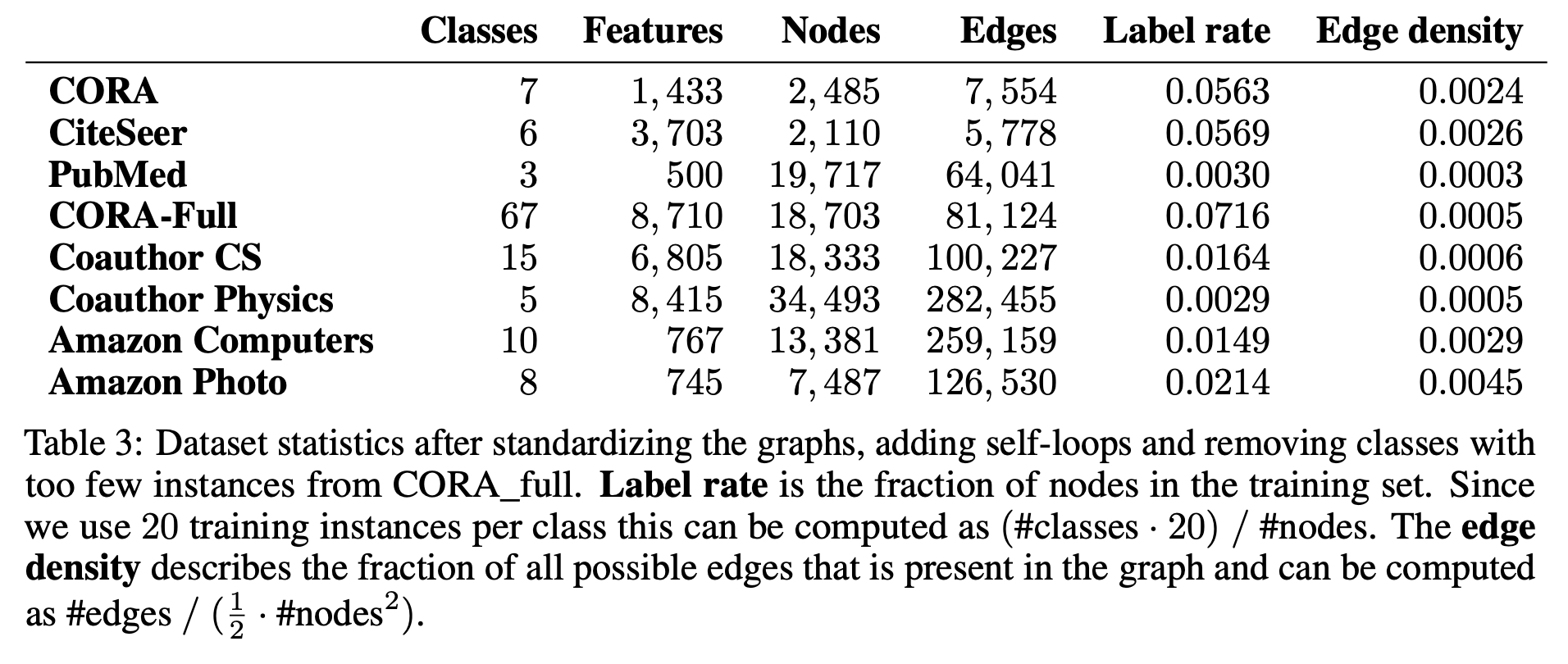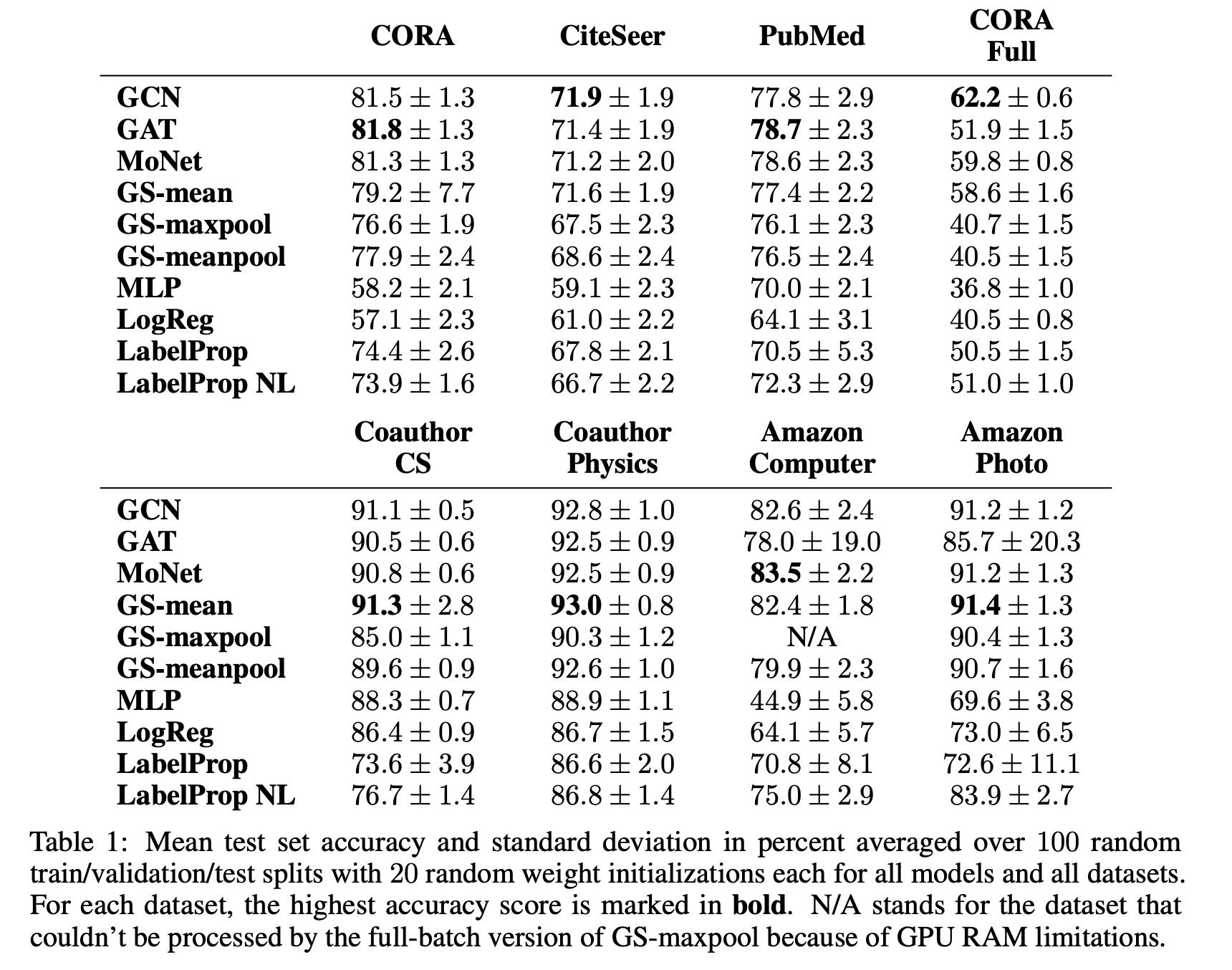Pitfalls of Graph Neural Network Evaluation
Motivation
The authors intend to perform a fair evaluation of prominent GNNs: GCN, MoNet, GraphSage, and GAT on node classification by:
using random train/validation/test splits rather than a fixed train/validation/test split.
using a standardized training and hyperparameter tunning procedure for all models
Experiment
The authors used datasets:
PubMed
CiteSeer
CORA
CORA-Full
Coauthor CS: co-authorship graphs based on the Microsoft Academic Graph from the KDD Cup challenge, where nodes are authors, edges indicate coauthorship, node features represent paper keywords for each author's papers, and class labels indicate most active fields of study for each author
Coauthor Physics: same as Coauthor CS
Amazon Computers: segments of the Amazon co-purchase graph, where nodes represent goods, edges indicate that two goods are frequently bought together, node features are bag-of-words encoded product reviews, and class labels are given by the product category
Amazon Photo: same as Amazon Computers
For all datasets, the authors treat them as undirected and only consider the largest connected component. The dataset statistics is included below:

The authors performed an extensive grid search for learning rate, size of the hidden layer, strength of the regularization, and dropout probability. They restricted the random search space to ensure that every model has at most the same given number of trainable parameters. For every model, they picked the hyperparameter configuration that achieved the best average accuracy on Cora and CiteSeer datasets (averaged over random splits and random initialization for each split). In all cases, they used labeled nodes per class as the training set and nodes per class as the validation set, and the rest as the test set.
Meanwhile, they keep the model architectures as they are in the original paper/reference implementations, including:
the type and sequence of layers
choice of activation functions
placement of dropout
choices as to where to apply regularization
the number of attention heads for GAT is fixed to be
the number of Gaussian kernels is fixed to be
all the models have layers (input features hidden layer output layer)
For the rest training choices (optimizer, parameter initialization, learning rate decay, maximum number of training epochs, early stopping criterion, patience and validation frequency), they use the same for all models.
They also consider four baseline models:
Logistic regression
Multilayer perceptron
Label propagation
Normalized laplacian label propagation
The former two do not consider graph structure and the latter two only consider the graph structure and ignore the node attributes.
See below for the experiment result:

Last updated